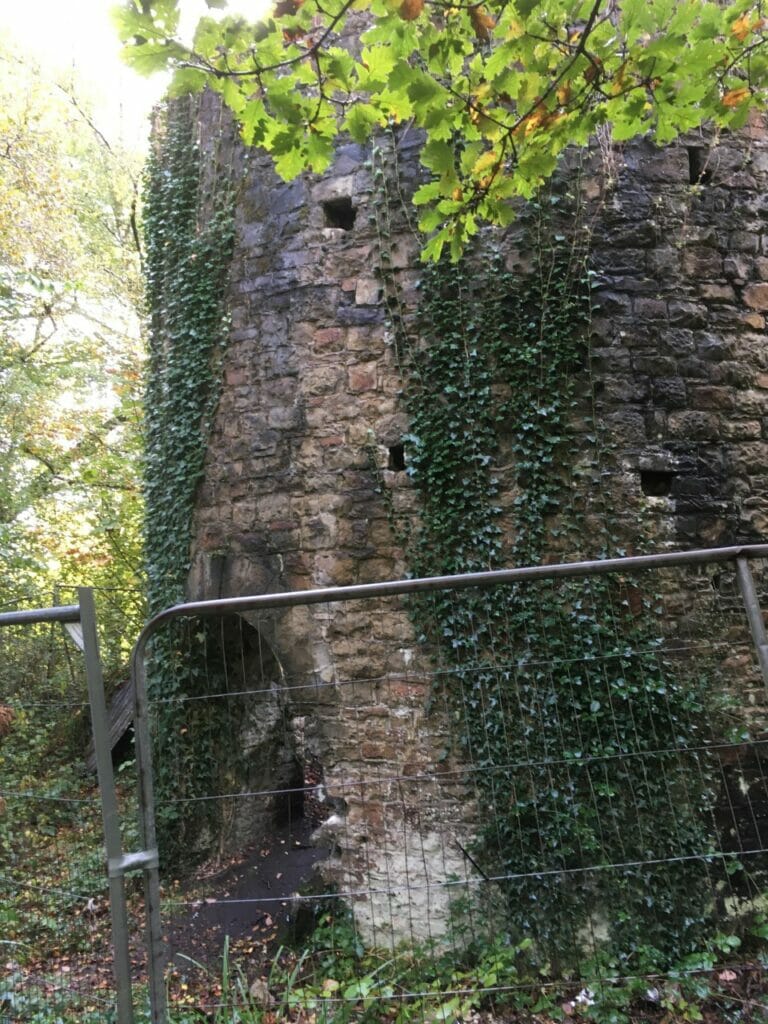Information from The Gower Landscape Partnership (GLP)
Don’t lick the stones! Good advice if you are near the Clyne Wood Arsenic and Copper Works. We are planning some work to stabilise the Ivy Tower in Clyne Woods – which was once the chimney at the top of a flue, taking away the toxic gasses from the Arsenic and Copper Works (c.1825-1860). It was later turned into a folly or viewing platform as part of the landscaped gardens of Clyne Castle. Anyway, before we can do anything, we needed to check the chemical contamination levels – and the Earth Science Partnership were on site last week to take samples for analysis. This is a fascinating aspect of Clyne Valley – although there’s not much to see on the ground (apart from the Ivy Tower!). The whole of the works is protected as a “Scheduled Monument”, and we are working closely with Cadw to protect it. Here’s what the Cadw statement has to say about it: The smelting of non-ferrous metals was leading industry in the Swansea area in the late 18th and early 19th Century, and the region dominated world production of copper. This is the best preserved of any of its 50 or so former non-ferrous smelting works. It was built between 1825 and about 1840 and operated intermittently until 1860, after which the buildings were used as hay sheds. It exhibits a high level of survival of an early to mid century layout owing to the absence of subsequent development. The remains await detailed interpretation, but the multiple terraces typical of such works can be seen, together with a tall ruined building, pillars for an open timber structure, furnaces, and a long system of hillside flues and condensers leading to a large tower (Ivy Tower) as SS 6133 9081, gothicised in the late 19th Century as a folly for the adjacent Clyne Castle. At the downhill side of the site a small slag heap at the bottom of these the line of Clyne Wood Canal, including what appears to be a small dock. The area scheduled includes the terraces comprising the works itself, together with the adjacent line of the canal, and the flue up to and including Ivy Tower (but exceeding the footpath which crosses it). The monument is heavily overgrown with scrub and unmanaged woodland, and is within the Clyne Valley Country Park.





